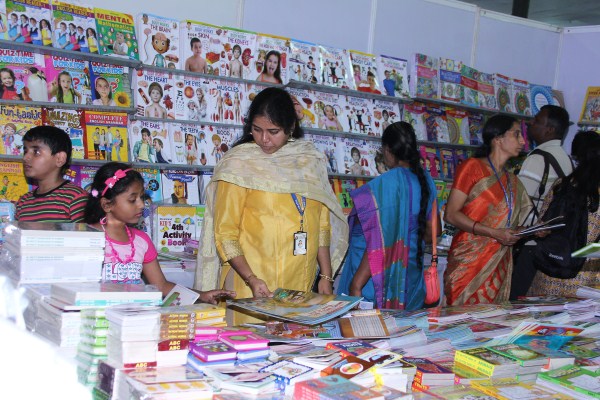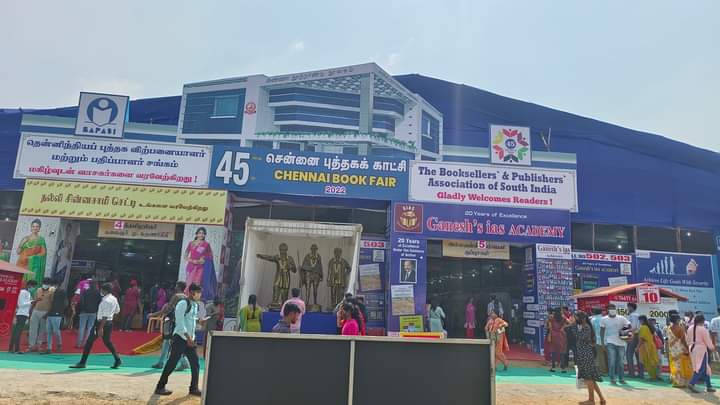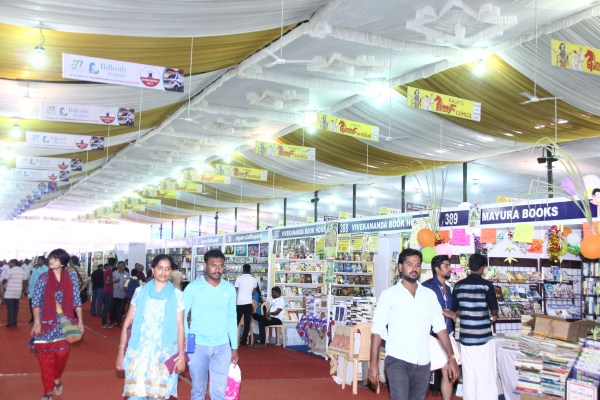
Tamil publishing industry is thriving. Chennai Book Fair is major part of the reason

Despite the massive changes in publishing, Tamil readership continues to grow. The year-on-year increases in the number of book titles, publishing houses and, of course, revenues has led to healthy profits for the industry. The Chennai Book Fair, now in its 45th year, is proof of the thriving culture of reading in Tamil Nadu.
Despite its modest beginnings in 1977, the Chennai Book Fair is today considered as an important event in the city’s cultural calendar. Organised by the Booksellers and Publishers Association of South India (BAPASI) every year, the first fair was held at the Madrasa-i-Azam school at Anna Salai.
“It was incredible. The publishers believed that people would throng the fair and stand in queue just to buy books,” said Tamilmagan, a writer.
“Over the years, the fair has changed locations. For more than 25 years, it was held at Quaid-e-Milleth Government College for Women, Anna Salai, then at St George School, Kilpauk, then at YMCA Physical Education College Ground, Nandanam. In between, the fair was also held at drive-in restaurants and on Island Grounds,” he said.
Something for Everyone
Starting with only 22 stalls, the association set an example of how to conduct book fairs. In 2003, Chennai Book Fair earned a revenue of nearly ₹6 crore. In 2013, about ₹12 core. In 2020, before COVID-19 hit, revenue touched ₹20 crore. Even in pandemic-hit 2021, the fair generated revenue of ₹12 crore.
Also read: Real-life Jai Bhim hero K Chandru pens a tell-all memoir
The Neyveli Book Fair, promoted by Neyveli Lignite Corporation, and Erode Book Fair, held by Makkal Sindhanai Peravai, a cultural organisation, owe their success to it.
These fairs have books on every topic, including a general category comprising cooking, gardening, self-improvement, spirituality, quiz programmes and astrology – the last has a dedicated readership in every generation.
Print Never Dies
“Every year we hold the fair for 10 to 12 days. But since we are in the middle of a pandemic, in order to control the crowds, we have stretched it to 19 days,” said A Loganathan, executive committee member, BAPASI. “Between February 16 and March 6, we have three weekends and readers can visit the fair without any hassle,” he said.
The organisers wanted to have 1,000 stalls this year, but could receive government permission for only 800 due to COVID-19, Loganathan said.
Despite fears that books are going out of fashion, the fair has witnessed steady growth over the past 45 years, he said.
“Earlier, publishers used to book one stall. But over the past few years, most of them are booking two stalls to display their books. Accordingly, every year there are more than 10,000 new titles being brought to the fair. This at a time when there is a perception that young people prefer to read e-books,” Loganathan added.

Kindle Is Supplementary
S Subba Rao, a writer, said for serious readers, Kindle are a supplement. Most still prefer physical books.
“Some three decades ago, publishing houses published only classics by popular writers and readers hovered around only those books. Now readers search for new genres, and accordingly, publishers and writers are coming with unexplored subjects. Having said that, it doesn’t mean classics have lost their importance. They continue to play a role in shaping the readership at an early stage,” he said.
Rao said despite popular perception, social media has played a role in enhancing reading culture in Tamil.

Lack of Readership Study
According to Prabahar Vedamanickam, associate professor, Department of Tamil, The American College, Madurai, there is a need for reliable readership surveys in the state.
“There is a market for Tamil books, no doubt. But are youngsters their 20s reading Tamil books? There is a rural-urban divide when in comes to reading culture. In urban areas, youngsters may read more in English. We need proper studies on readership to establish trends,” he said.
Vedamanickam said diasporic Tamils may be contributing to the thriving market, because for them price is not an issue.
“Many more books are being translated into Tamil now. There are more writers from the IT field. People from film industries are writing books and novelists are turning into screenplay writers in this era of OTT platforms. The publishing and promotion of the books have also become easier. Overall, literature has become a healthy business, and this has given hope that one can lead a decent life by writing,” he said.
Also read: What cut short the Indian superheroes’ cape
Tamilmagan, who is also a publisher, said that due to the ‘print on demand’ process, most publishers don’t suffer major losses.
“Print on demand has brought down burden for the publishers. Today, they are even ready to publish the work of newcomers. First they publish limited copies, say, 300. If it moves well, then they publish another 200 copies. That was not the case earlier. Publishers had to printed at least 1,000 copies and most of the time they were unable to sell them. Some established writers have now started their own publishing houses,” he said.


